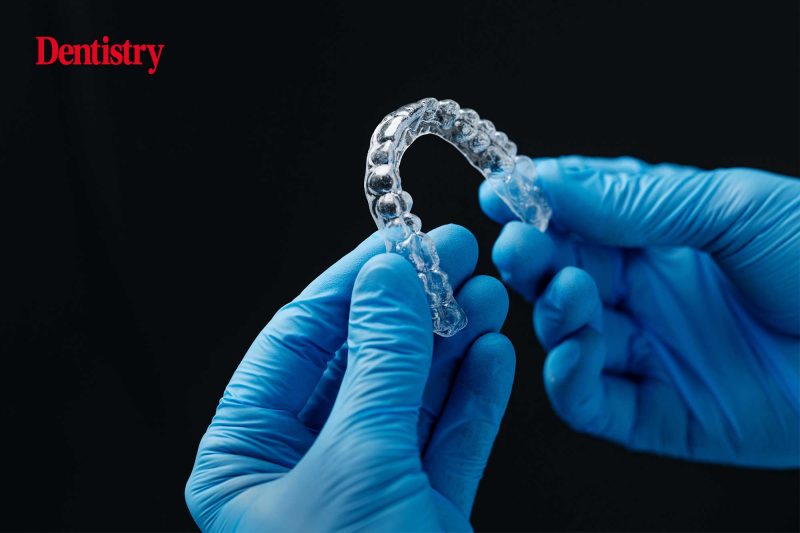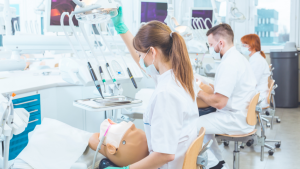Uncovering the truth behind Smile Direct Club

From non-disclosure customer agreements to illegal dental treatment, Emma Laing discusses the reality of Smile Direct Club and how it has affected its customers.
When I had the TV on a few months ago while making dinner, I was stopped in my tracks by a glossy advert promising me beautiful straight teeth at a very low monthly cost delivered to my door in lovely packaging.
Given the difficulties of NHS dental care access in the UK, surely this would come as a welcome option to so many – almost too good to be true?
The reality is this advert totally riled me; it is misleading the general public to start an inadequately assessed and largely unsupervised dental treatment. It goes way past the ethical banners under which, as dentists, we have trained and practised for so many years.
Where is the dental history, where is comprehensive examination, where is the full periodontal assessment with X-rays? This should be about health, not a commercial venture for aesthetic gain.
Illegal dental treatment
As an active member of the American Association of Orthodontists (AAO), I receive frequent email updates from them regarding the issues of Smile Direct Club in the United States. Both the AAO and American Dental Association (ADA) are leading the fight against Smile Direct Club and other similar companies offering direct-to-consumer orthodontic treatment in order to protect patients.
The AAO has filed complaints in 36 US states alleging Smile Direct Club has been practising dental treatments illegally.
Smile Direct Club responded by asking customers to self-report any dental problems, to which the ADA has responded: ‘Customer self-reporting does not meet the applicable standard of care because it does not satisfy a dentist’s requisite professional due diligence.’
The AAO suggests customers consider these questions prior to undergoing treatment:
- As part of your treatment with aligners, are X-rays and other comprehensive diagnostic records taken?
- As part of your treatment, are visits to a dentist or orthodontist included?
- If a dental professional is involved in your treatment, how can you contact them? Can you contact them if an emergency comes up?
When it comes to these types of teledentistry, the answer to the above questions is generally no which can lead to detrimental dental issues.
Non-disclosure agreements
One of the AAO news emails that I found most shocking in my inbox this summer was the successful conclusion of a litigation in the district of Columbia against Smile Direct Club. This regarded 17,000 customers who signed up to Smile Direct Club and had been obligated to sign non-disclosure agreements in the event of being dissatisfied with their treatment and wanting refunds.
To quote the DC attorney general: ‘Smile Direct Club promises a simple, safe and affordable way to straighten teeth and touted five-star reviews. But behind the scenes, the company silenced dissatisfied consumers and buried complaints about injuries its products caused. Now customers will be free to speak out.’
Bankruptcy
Last week, Smile Direct Club filed for bankruptcy in order to recapitalise, continue to operate and repay its creditors while continuing to operate. To quote, they will continue ‘their mission of providing safe, convenient, and effective oral care to their customers’.
The deception of the general public continues, and many will be unaware of the financial position of the company and still see the glossy adverts and sign up for treatment. In my opinion, this is wrong and there is no clear duty of care of care to their customers.
The options are to stop the treatment and let the teeth relapse uncontrollably. This could lead to a poor occlusion, periodontal issues, and teeth loaded over time at the wrong angles, in a more detrimental position than where they started.
They could also go and see a dentist or orthodontist for corrective treatment privately as there is no scope for this on the NHS. This will incur much larger costs, which their patients may not to be able to afford if they sought this treatment to be economical in the first place.
Why do people keep signing up to these treatments anyway?
I will share a recent example to illustrate this. I am often referred patients for second opinions of complex cases. This year, a medical consultant who practices near to me in the West End self-referred as she hadn’t had time to see a dentist in many years.
During the pandemic she noticed that her midline diastema was increasing so she ordered from Smile Direct Club. She said her teeth moved very fast and it didn’t seem quite right, so she thought she had better get fully assessed.
She presented with periodontitis and bone loss of over 40% on many teeth. Her teeth were spacing due to drifting and bone loss but this had never been assessed. She had no idea – she just said she had not seen a hygienist in a while. The aligners will have undoubtedly exacerbated this as teeth should not be moved if there is active periodontitis.
I reflected on this and realised that, post-pandemic, we are in an online shopping era. We buy on next-day Amazon prime, we order food online and it is very convenient. For many, teledentistry is just a next step on from this – and it’s easy to do.
However, the brakes need to be put on this process where healthcare is concerned. It is unsafe, the companies can go bust, and the main consequence will be to health, which these companies will wash their hands of in the long-term.
Follow Dentistry.co.uk on Instagram to keep up with all the latest dental news and trends.







